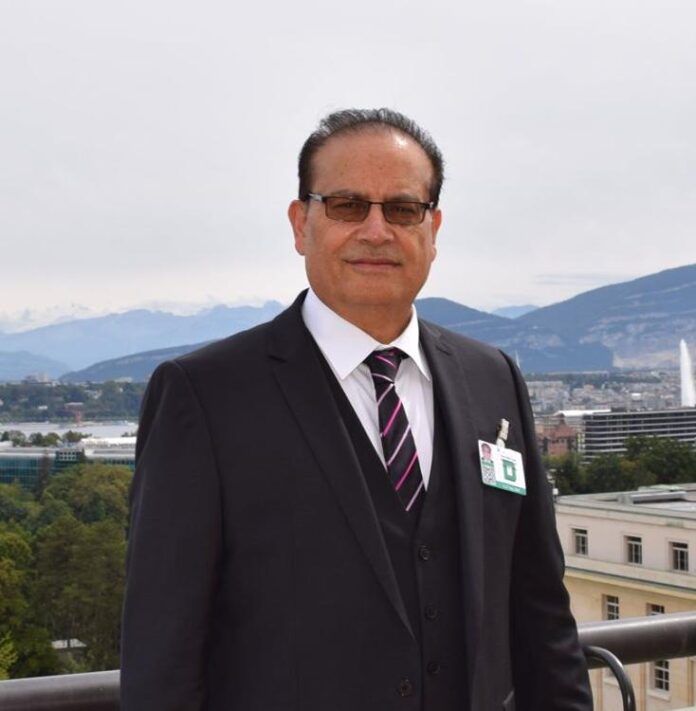By Qamar Bashir
President Trump’s Gaza Peace Plan is simple in intention but complex in execution. It envisions a staged ceasefire tied to the release of all hostages, a phased Israeli withdrawal linked to verifiable benchmarks, the deployment of an international stabilization force, and governance reforms that transition Gaza toward a reconstituted Palestinian authority supported by technocrats. It concludes with a pathway—deliberately flexible in language—toward Palestinian self-determination and eventual statehood. For Hamas, the red lines are disarmament and exclusion from governance; for Israel, they are credible security guarantees and an avoidance of steps that appear to reward an armed adversary. Between these lines lies a narrow diplomatic corridor where progress must move swiftly or collapse under mistrust.
Hamas’s reaction is a tactical acceptance laced with strategic reservations. Its negotiators abroad signal readiness for a full hostage exchange and a willingness to cede administrative control to an interim Palestinian body, but they resist unconditional disarmament and permanent exclusion from politics. Inside Gaza, command structures are fractured; senior military cadres are depleted; field units operate semi-independently. Leaders willing to compromise must still gauge whether they can enforce any agreement among fighters radicalized by devastation and grief. Hence, the idea of surrendering heavy weapons to third-party custodians while retaining light arms as a “defensive dignity” measure—symbolically vital to Hamas but unacceptable to Israel without intrusive verification.
Israel’s stance is equally ambivalent. Strategically, the plan offers what Israel has long demanded: the return of hostages, demilitarization of Gaza, and an international mechanism to assume day-to-day responsibilities while blocking rearmament. Politically, however, it forces the ruling coalition to digest hard realities: staged withdrawals under international supervision, re-empowerment of a reformed Palestinian Authority, and text that implicitly gestures toward a future Palestinian state. For an Israeli leadership dominated by hard-liners, this feels like concessions under fire and risks coalition fracture. Hence, Jerusalem insists on strict benchmarks, real-time monitoring, and a conditional, performance-based path to statehood—not one dictated by dates.
Iran’s posture is obstructionist yet calculated. A low-intensity conflict serves its interest by keeping Israel and the U.S. occupied while Iran restores deterrence and influence. It will quietly encourage factions to brand disarmament as betrayal and redirect loyalty to splinter groups. Still, Tehran recognizes that a united Arab-Western front behind a ceasefire could shrink its diplomatic space. Expect it to question verification mechanisms and sovereignty provisions while retaining leverage through militant proxies capable of derailing peace at will.
Turkey, Qatar, and Egypt form the indispensable mediating triangle. Ankara frames Hamas’s partial acceptance as a “constructive step” and demands Israel halt military operations. Doha, central to past negotiations, supports the swap framework and advocates timelines that preserve face for both parties. Egypt, the gatekeeper of Rafah, emphasizes sequencing—ceasefire first, synchronized exchanges of hostages and prisoners, and gradual transfer of governance under Arab oversight. Their combined credibility will determine whether enforcement mechanisms succeed or unravel.
The Palestinian Authority welcomes the plan but insists that Gaza’s sovereignty lies with the State of Palestine, unified with the West Bank under one civil and security framework. Yet its legitimacy deficit is glaring. Reforms must be real—transparent appointments, credible policing, and efficient public services—to regain Gazan trust. Jordan and other Arab states condition their support on those very reforms and on tangible progress toward the two-state horizon.
Europe, the U.K., Canada, and other Western partners view the plan as the first viable diplomatic track in months. Their priorities converge: secure a ceasefire, free all hostages, restore humanitarian lifelines, and cautiously advance a two-state endgame. They will bankroll stabilization and reconstruction but only under strict oversight. France and Germany call it “the best chance for peace”; Spain and Ireland demand stronger civilian protections; EU institutions emphasize timelines and enforceable humanitarian guarantees.
Pakistan, Malaysia, and the wider Global South call the plan imperfect but necessary to end the siege and save lives. They urge a complete ceasefire, unrestricted aid access, and firm guarantees against annexation or forced displacement. Their support will be critical in lending legitimacy to any multinational peace force that must not appear Western-controlled.
Yet Trump’s plan, while pragmatic, misses a critical element: justice. Peace without accountability is fragile, and reconstruction funded by neutral donors ignores moral responsibility. It was Israel that unleashed overwhelming destruction—flattening neighborhoods, hospitals, schools, and mosques, killing thousands of civilians, and turning Gaza into ruins. Therefore, the financial and moral burden of rebuilding Gaza must not fall upon the Arab world or the international community, but squarely upon those who caused the devastation—Israel and its allies, principally the United States. They must finance reconstruction, compensate victims, and fund the restoration of homes, infrastructure, and livelihoods. Anything less would legitimize impunity and perpetuate the cycle of destruction.
Equally, Hamas cannot escape scrutiny for its October 7 attack that killed and abducted civilians. Justice must be even-handed: a transparent, international investigation under UN auspices should probe alleged war crimes, genocide, and ethnic cleansing by both Hamas and Israel. Those who ordered or executed attacks on civilians, destroyed civilian infrastructure, or used starvation and displacement as tools of war must face the law. Impunity—whether for militants or states—cannot coexist with lasting peace.
A just and sustainable settlement would thus require three compacts added to Trump’s architecture. First, a clarity compact—public, enforceable annexes specifying who verifies compliance, how violations are penalized, and when corrective mechanisms activate. Second, a sequencing compact—a 30-60-90 day ladder of actions tied to verifiable outcomes: immediate ceasefire and aid corridors; phased withdrawals; transfer of civil governance; and reconstruction monitored by auditors from neutral states. Third, a dignity compact—addressing not only arms but human dignity: mobility, jobs, municipal elections within a year, and a binding roadmap toward statehood linked to measurable governance performance.
To this must be added a justice compact—a moral and legal foundation ensuring accountability. An independent tribunal, perhaps modeled on the International Criminal Court but regionally backed, should document atrocities, assign blame, and impose reparations. This would transform peace from a political bargain into a moral restoration, proving that even in geopolitics, justice is not optional.
Arab and Western partners must move from mediation to stewardship—deploying peacekeepers, engineers, and funds not as charity, but as custodians of shared responsibility. Moreover, the reconstruction of Gaza must be sponsored and fully financed by Israel—the power that devastated those neighborhoods—and by any allies whose military or material support enabled that destruction. This is not punitive grandstanding; it is deterrence by consequence: any nation or actor that resorts to ethnic cleansing, mass starvation, or genocidal tactics must know it will bear the full financial, legal and moral costs of rebuilding, reparations, and accountability.
The alternative is a replay of history: more funerals, deeper resentment, and another generation growing amid rubble. Flexibility on process is not weakness; it is maturity. If disarmament becomes verifiable, withdrawal becomes milestone-driven, governance becomes transparent, and accountability becomes universal, then the guns can fall silent, Gaza can rebuild, and the Middle East can finally begin to heal.
By Qamar Bashir
Press Secretary to the President (Rtd)
Former Press Minister, Embassy of Pakistan to France
Former Press Attache to Malaysia
Former MD, SRBC | Macomb, Michigan, USA

















